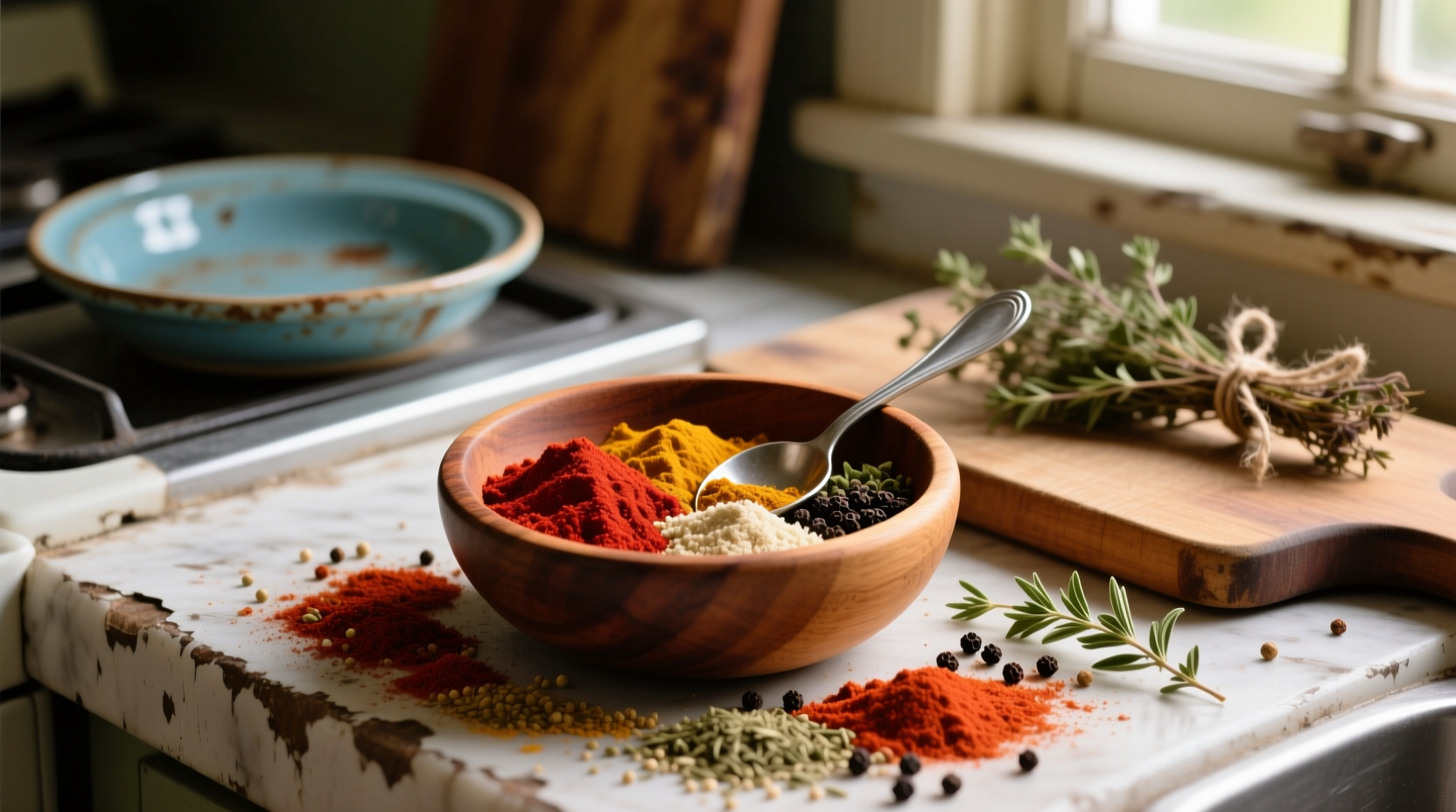
What Makes Cajun Spice Different From Ordinary Hot Seasonings
Many home cooks mistakenly believe Cajun spice is simply "spicy seasoning," but authentic blends showcase Louisiana's unique culinary heritage. Unlike generic hot seasonings that rely solely on cayenne, traditional Cajun spice balances heat with earthy, aromatic components that enhance rather than overwhelm dishes. This distinctive profile developed from Acadian settlers adapting French cooking techniques to available New World ingredients after their expulsion from Canada in the 18th century.
Cajun vs. Creole: The Critical Distinction You Need to Know
| Characteristic | Cajun Spice | Creole Seasoning |
|---|---|---|
| Origin | Rural Acadiana ("Cajun Country") | Urban New Orleans |
| Heat Level | Moderate to High | Mild to Moderate |
| Key Ingredients | Paprika, garlic, onion, black pepper, cayenne | Similar base plus oregano, thyme, paprika |
| Cultural Influence | French Acadian | French, Spanish, African, Caribbean |
| Typical Use | Blackened fish, grilled meats, game | Gumbo, étouffée, seafood dishes |
The Evolution of Cajun Spice Through Louisiana History
Understanding Cajun spice requires examining its historical development. After the Great Upheaval (Le Grand Dérangement) of 1755, Acadian exiles settled in rural Louisiana, adapting their French culinary traditions with available ingredients. The spice blend evolved through three distinct phases:
- 1760s-1880s: Early settlers used wild herbs, black pepper, and native chilies they could grow
- 1890s-1950s: Commercial spice availability expanded the blend with paprika and garlic powder
- 1960s-Present: Chef Paul Prudhomme popularized "blackened" cooking, increasing cayenne content in commercial blends
According to Louisiana State University's Agricultural Extension, authentic home recipes typically contain 2-4% cayenne by volume, while many commercial blends double this amount to appeal to national palates expecting extreme heat.
Authentic Ingredients Breakdown: Beyond Just Heat
While recipes vary by family and region, traditional Cajun spice contains these core components:
- Paprika (30-40%): Provides earthy base flavor and distinctive red color
- Garlic Powder (15-20%): Adds savory depth without burning during cooking
- Onion Powder (10-15%): Complements garlic with sweet, aromatic notes
- Black Pepper (10-15%): Contributes complex heat that develops during cooking
- Cayenne (2-8%): Delivers the signature kick—higher in commercial blends
- Additional Spices (5-10%): Often includes white pepper, thyme, oregano, or cumin
The Southern Foodways Alliance notes that coastal Cajun communities traditionally use less cayenne than inland regions, where hunters relied on stronger flavors to mask gamey tastes.
Practical Application: Using Cajun Spice Like a Louisiana Cook
Many home cooks make critical errors when using Cajun seasoning. Follow these professional techniques for authentic results:
Dry Rub Method for Meats and Fish
Apply generously 30-60 minutes before cooking to allow flavors to penetrate. For blackened fish, press the seasoning firmly onto the surface—don't just sprinkle. The key is creating a crust that caramelizes during high-heat cooking.
Building Flavor in Liquid Dishes
For gumbo, jambalaya, or étouffée, add Cajun spice early in the cooking process to the "holy trinity" (onions, celery, bell peppers) while sautéing. This allows the spices to bloom in the fat, releasing essential oils that create complex flavor layers impossible to achieve by adding seasoning at the end.
Heat Management Techniques
Remember that cayenne's heat intensifies with cooking time. For milder results, add half the seasoning initially and the remainder near the end of cooking. Professional chefs often separate the cayenne from other spices, adding it later to control heat levels precisely.
Regional Variations You Won't Find on Store Shelves
Commercial Cajun spice represents a standardized version that doesn't capture Louisiana's regional diversity. In Acadiana, three distinct variations exist:
- Acadiana West (Lafayette area): Higher cumin content reflecting Tejano influences
- Acadiana East (New Iberia area): More garlic-forward with subtle anise notes
- Atchafalaya Basin: Incorporates wild herbs like filé powder in some family blends
A 2023 survey by the University of Louisiana at Lafayette's Center for Louisiana Studies found that 78% of native Cajun home cooks adjust their spice blends seasonally—using less cayenne in summer months when ambient heat affects perceived spiciness.
Avoid These Common Cajun Spice Mistakes
Even experienced cooks make these errors that compromise authentic flavor:
- Using it as a finishing spice: Cajun seasoning needs time to meld with ingredients—add early in cooking
- Over-salting: Many commercial blends already contain salt—taste before adding extra
- Storing improperly: Light and moisture degrade volatile oils—keep in airtight container away from stove
- Assuming all blends are equal: Commercial versions vary wildly in heat level and ingredient quality
Proper Storage for Maximum Flavor Longevity
To maintain peak flavor, store homemade Cajun spice in an airtight glass container away from heat and light. Properly stored, it retains optimal flavor for 6-8 months. Commercial blends typically last 12-18 months but lose vibrancy over time. Never store spice blends above your stove—heat from cooking rapidly degrades essential oils.
Creating Your Own Authentic Blend
For the most authentic experience, make your own Cajun spice using this professional ratio:
- ¼ cup paprika (preferably Hungarian sweet)
- 2 tablespoons garlic powder
- 2 tablespoons onion powder
- 1½ tablespoons freshly ground black pepper
- 1 tablespoon dried thyme
- 1½ teaspoons cayenne pepper (adjust to taste)
- 1 teaspoon dried oregano
- 1 teaspoon white pepper
Mix thoroughly and store in airtight container. For deeper flavor, toast whole peppercorns and spices before grinding—a technique Louisiana chefs call "waking up the spices."











 浙公网安备
33010002000092号
浙公网安备
33010002000092号 浙B2-20120091-4
浙B2-20120091-4